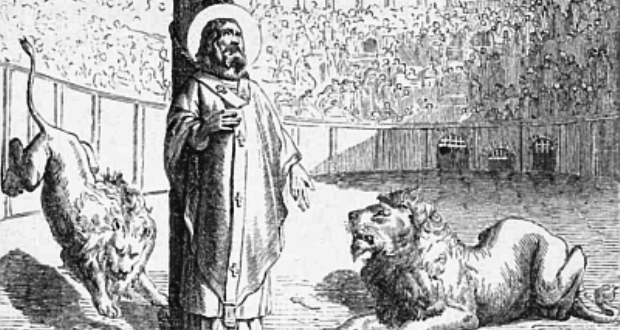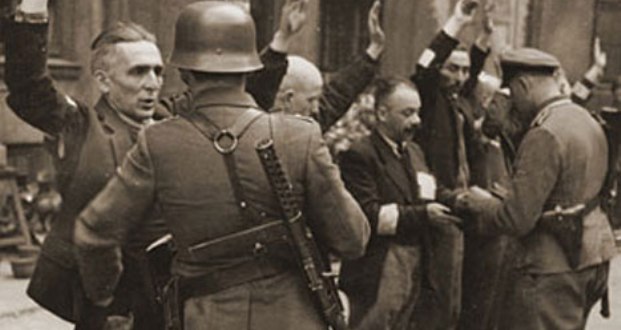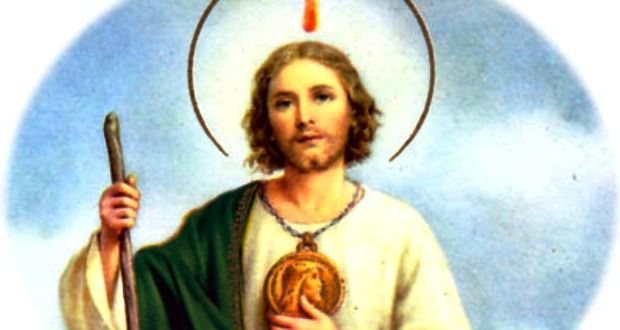St. Ignatius Of Antioch

Feast day: October 17th
He is the patron saint for throat disease.
St Ignatius of Antioch was born in Syria, around the year 50; and died at Rome between 98 and 117
Also known as: Theophoros, or God-Bearer
Little is known for certain about the very early life of Ignatius, who probably was born in Syria around the year 50. Legend recognizes him as the child Jesus set down amongst his disciples, as explained in the Bible (Matthew 18:1– 6; Mark 9:36– 37). Some sources state that he was a persecutor of Christians who became a convert and a disciple of St. John the Evangelist or of St. Peter or St. Paul. He called himself both a disciple and a “bearer of God” (theophoros). At about age 17, he became the second or third bishop of Antioch, Syria. He is stated to have actually been designated and consecrated by St. Peter after he left the deathbed of St. Evodius, the previous bishop.
Ignatius longed to offer his life in martyrdom during the persecution of Christians under the Roman emperor Domitian, however did not have the chance. However, he got his desire when a later on emperor, Trajan, saw Antioch about 107. Trajan had decreed that Christians should unite with their pagan next-door neighbors in the praise of the pagan gods. Failure to comply with this decree would in the death of the Christians. Ignatius went out of his way to disobey, with the predicable impact that he was taken before Trajan and sentenced to death in the Roman Coliseum.
The last months of Ignatius’s life are relatively well known, thanks to a series of pastoral letters he composed, and to modern accounts of those who took the trip with him on his last voyage to Rome. Their ship stopped at various ports around the Mediterranean, and at each stop St. Ignatius of Antioch was greeted by groups of Christians. They docked for an extended period of time at Smyrna, where Ignatius met St. Polycarp of Smyrna, then a young man, and received delegations from Magnesia and Tralles. Two of his first four letters were written to the faithful in these locations, a third was done to the Ephesians and the 4th to the Christians of Rome, whom he asked not to disrupt his martyrdom. In these letters, St. Ignatius of Antioch became the first to make use of the term “the Catholic Church.”.
Ignatius’s ship arrived in Rome on December 20, the final day of the general public games in the Coliseum, and he was hurried to the amphitheatre. Of his imminent fate, he wrote, “I hope that they will be timely with me. I shall entice them to eat me speedily.” Legend has it that as he was thrown to the lions, he called himself “the wheat of Christ,” saying loudly: “May I become acceptable bread to the Lord.”.
After his death, the image of Jesus is said to have been found inscribed on Ignatius’s heart. His antiques were carried back to Antioch and buried outside the gates. Later, Emperor Theodosius II had them relocated to the Tychaeum (Temple of Fortune), which was converted into a Christian church under Ignatius’s patronage. In 637, his antiques were once again relocated, this time to St. Clement’s in Rome, where they now rest.
Ignatius is very much venerated in the Eastern Orthodox along with Roman Catholic Church. A Greek icon with his similarity can be seen at the Saint Isaac of Syria Skete site.
Artists have depicted St. Ignatius of Antioch looking at a crucifix, a lion at his side; standing between two lions; in chains; holding a heart with “IHS” on it; or holding a heart with “IHS” torn out by lions. He may also be depicted with the image of Jesus on his chest; holding a fiery globe; or in a field with lions.



